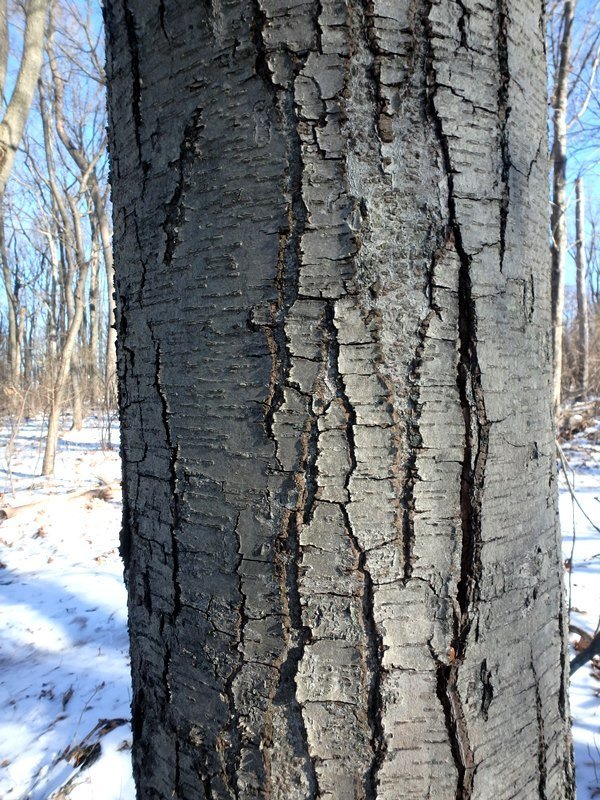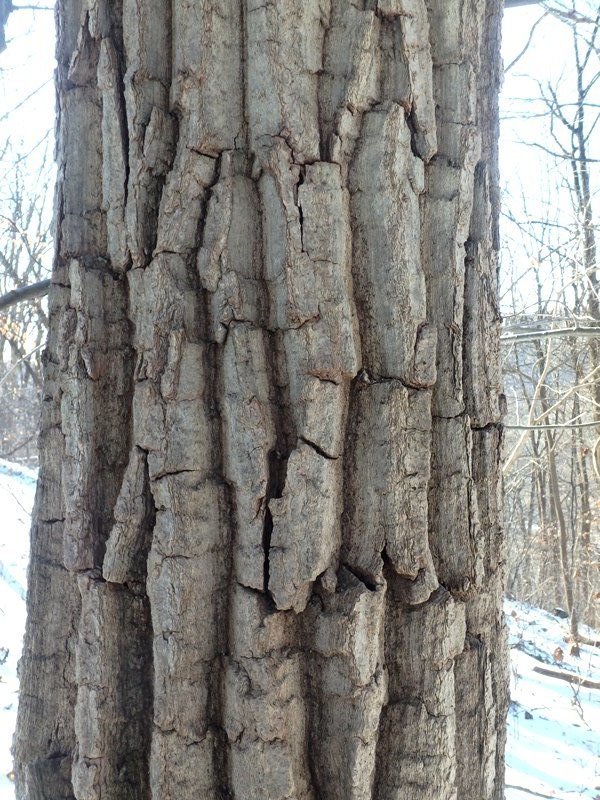Mariton: Tree Bark
by Tim Burris, Preserve Manager
Last winter I wrote a few Field Notes about different trees and their bark. I plan to continue that series this winter. I’m fascinated by tree bark, and I love admiring it on my walks in the forest. Bark reflects different moods depending on the sun, fog, snow, shade and rain. It is amazing if you pay attention.

During my college dendrology class (the study of woody plants), I made sketches and kept leaf samples, but I soon I switched gears and focused my energy on learning to identify the buds and the bark of every species. A few weeks into class it dawned on me that the final exam would be in December, long after leaves had fallen. While there were some leaves on Dr. Sakai’s Final test, she mostly had twigs and logs to identify. Knowing tree bark really paid off for the test, but I have used that knowledge throughout my life.
When you think about it, trees in our area are leafless for 5 to 7 months of the year. If knowing trees interests you, it is worthwhile to learn the bark. Leaves (and buds) are of little use if the leaf is forty feet up the tree you are trying to identify.

Learning the bark is not as hard as you might think. In fact, it is like learning bird songs. You might get stumped (pun intended) now and then, but the more you pay attention to the similarities and differences, the easier it is to learn the different trees by the bark.
Like bird songs there are helpful tricks to help your memory. Dr. Sakai used visual descriptions to describe barks which were useful to me: cat scratch, burnt-potato chip, ski tracks, etc. I don’t know when it happened, but at some point I progressed beyond mere identification to really appreciating the beauty of bark. Tree bark is so rich in texture, color, and patterns. Walk through a forest that has a diversity of species and study the bark as art. Close your eyes and run your hands over a tree for another interesting way to experience bark. In Dr. Sakai’s class we would put our face to the tree to smell the bark. In the end, identifying trees becomes a sensory experience.

Many people see the plantings in their yard as an art gallery. There are exhibits with blossoms, fall leaves, seeds and fruits, and the wildlife attracted to the trees. In that gallery, bark is just one of the rotating exhibits. -And please don’t carve initials on a priceless piece of art.
